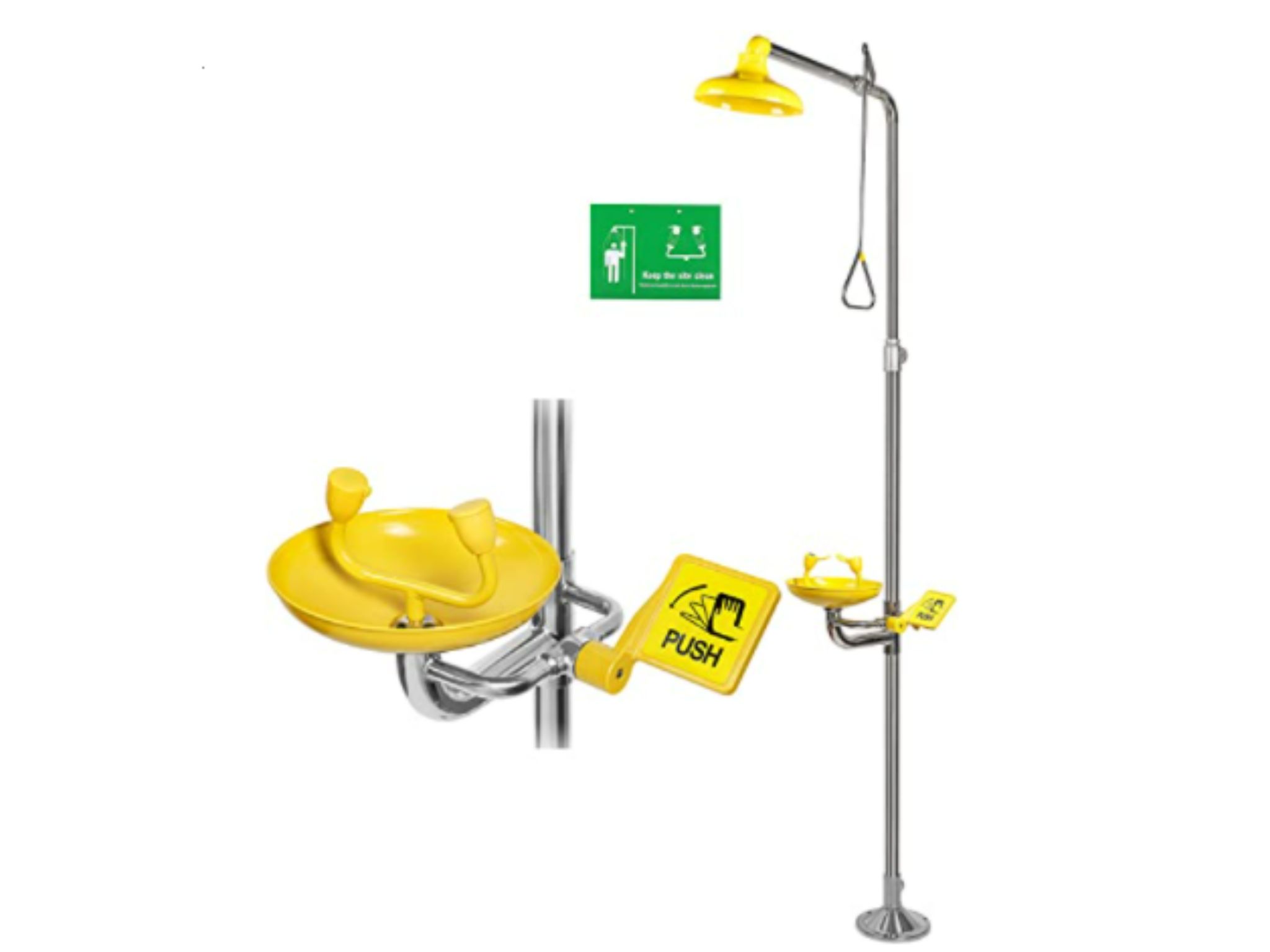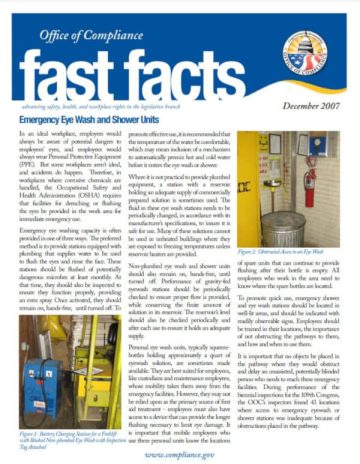In an ideal workplace, employers would always be aware of potential dangers to employees’ eyes, and employees would always wear Personal Protective Equipment (PPE). But some workplaces aren’t ideal, and accidents do happen. Therefore, in workplaces where corrosive chemicals are handled, the Occupational Safety and Health Administration (OSHA) requires that facilities for drenching or flushing the eyes be provided in the work area for immediate emergency use.
Emergency eye washing capacity is often provided in one of three ways. The preferred method is to provide stations equipped with plumbing that supplies water to be used to flush the eyes and rinse the face. These stations should be flushed of potentially dangerous microbes at least monthly. At that time, they should also be inspected to ensure they function properly, providing an even spray. Once activated, they should remain on, hands-free, until turned off. To promote effective use, it is recommended that the temperature of the water be comfortable, which may mean inclusion of a mechanism to automatically premix hot and cold water before it enters the eye wash or shower.
Where it is not practical to provide plumbed equipment, a station with a reservoir holding an adequate supply of commercially prepared solution is sometimes used. The fluid in these eye wash stations needs to be periodically changed, in accordance with its manufacturer’s specifications, to insure it is safe for use. Many of these solutions cannot be used in unheated buildings where they are exposed to freezing temperatures unless reservoir heaters are provided.
Non-plumbed eye wash and shower units should also remain on, hands-free, until turned off. Performance of gravity-fed eyewash stations should be periodically checked to ensure proper flow is provided, while conserving the finite amount of solution in its reservoir. The reservoir’s level should also be checked periodically and after each use to ensure it holds an adequate supply.

